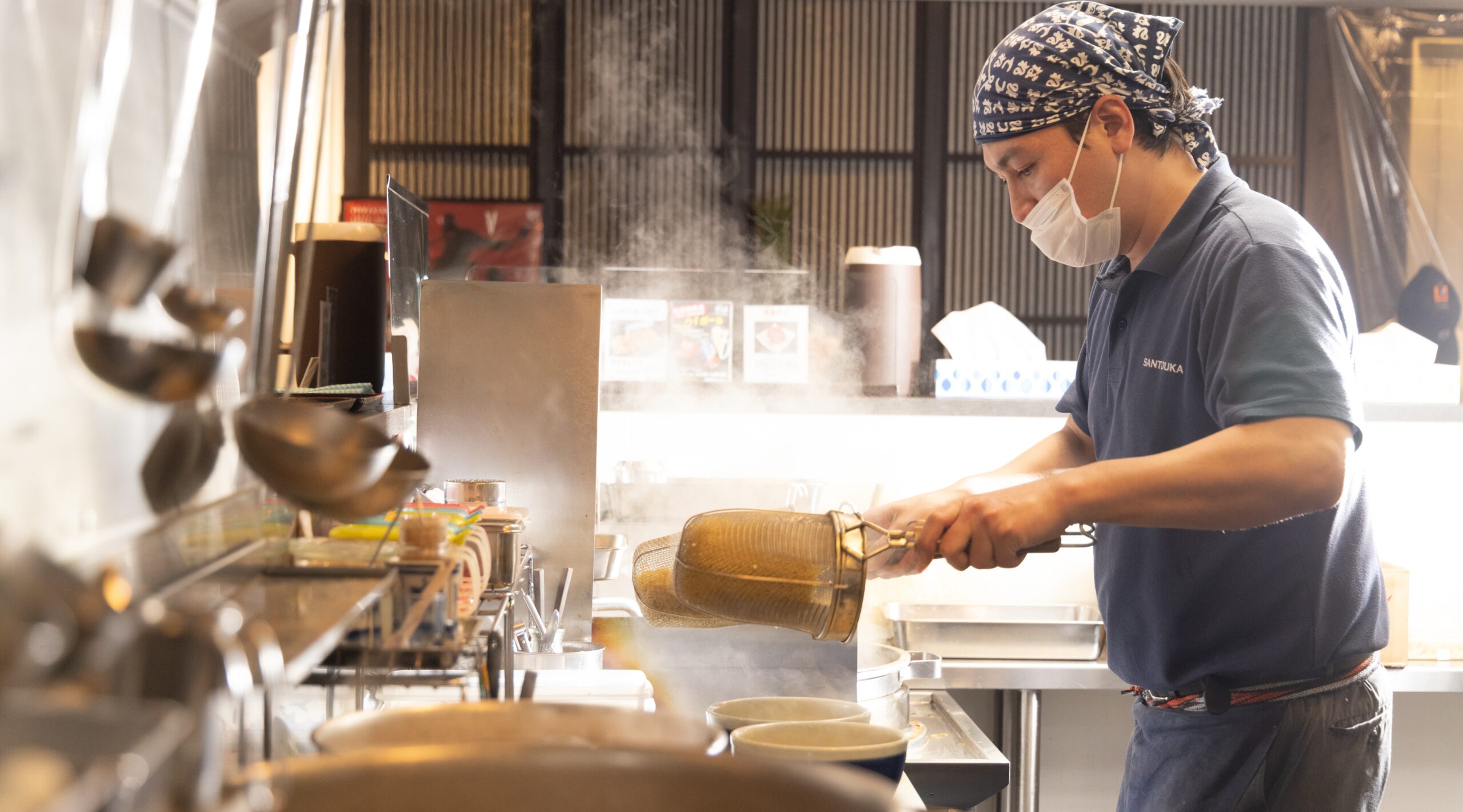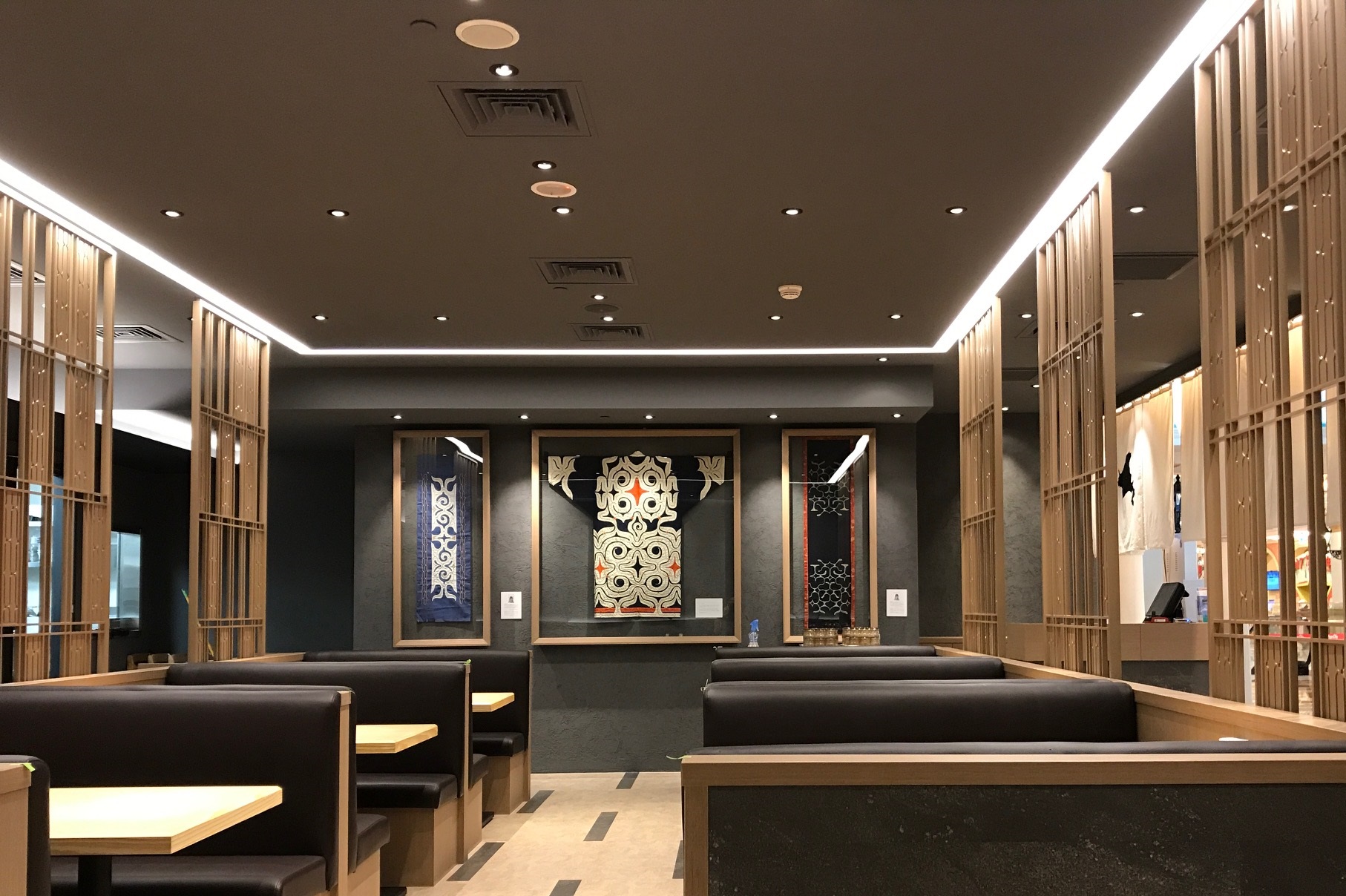
Ramen Santouka’s Banqiao store (Mega City Banqiao Far Eastern Dpt. Store) in Taiwan. The Hokkaido-based company features traditional Ainu garments and craft works in many of its overseas stores as a means of introducing the indigenous culture of Hokkaido to the world.
At one time, Japanese cuisine meant sushi and tempura to most people outside of Japan. Today, for more and more people, it means ramen. Since the early 2000s, Japanese ramen restaurants have proliferated overseas, and it’s now possible to enjoy good ramen around the globe. One of the first ramen stores to venture abroad was Asahikawa-based Ramen Santouka, which has played a significant role in bringing Hokkaido’s unique ramen culture to the rest of the world.
When Hitoshi Hatanaka opened his first restaurant in Asahikawa, Hokkaido in 1988, it had only nine seats. But the specially prepared soup of Ramen Santouka’s shio (mild salt-flavored) ramen soon earned itself fans all over the country. In 1999, Hatanaka founded Ab-out Co., Ltd. for the purpose of expanding the franchise. President Shinichi Kikuta, who together with Chairman Hatanaka has spearheaded the growth of the Ramen Santouka brand, spoke to us about the company’s expansion abroad.
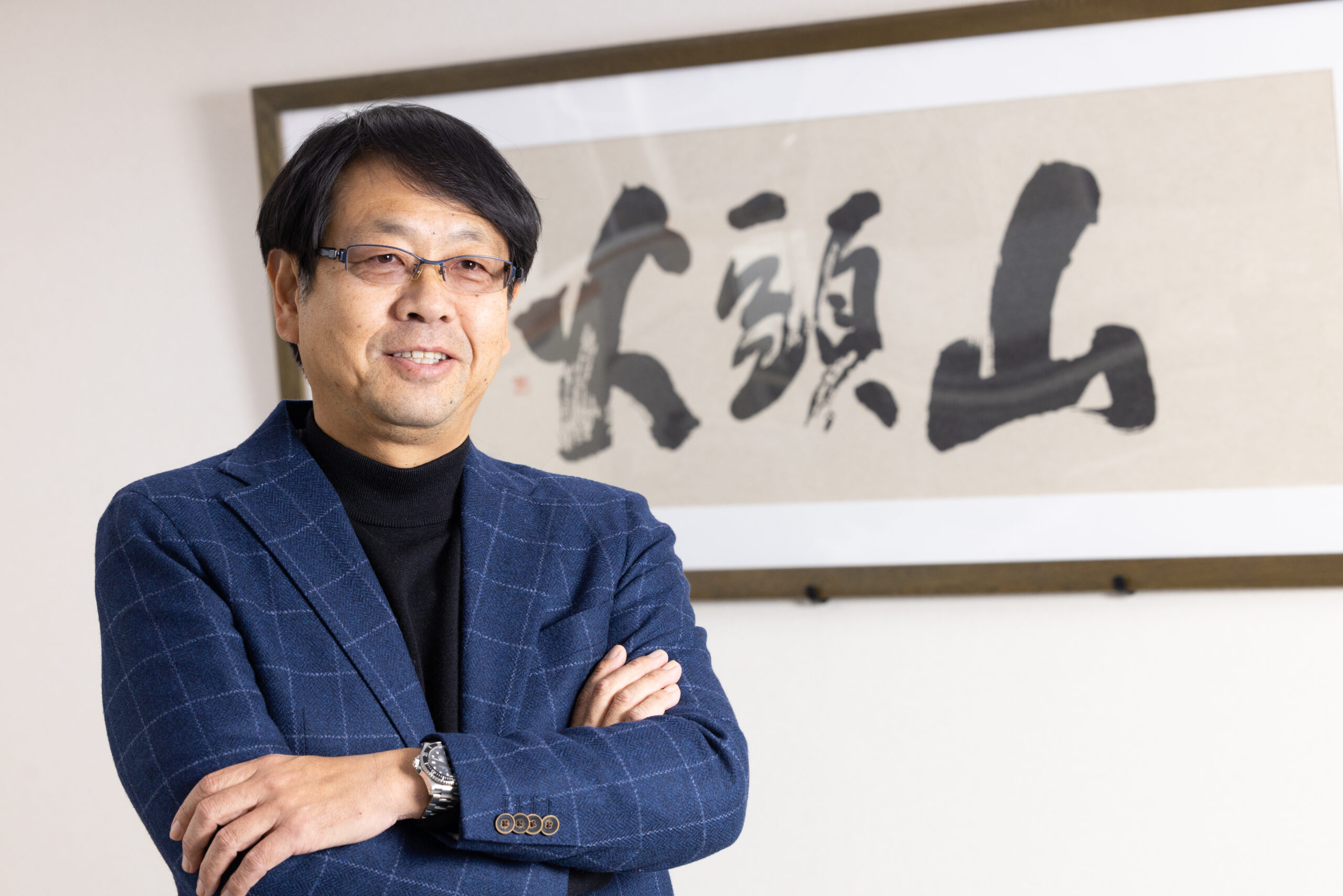
Kikuta says the idea of expanding Ramen Santouka overseas was born in the United States. Pork cheek was favored as a grilled meat in Japan, but in the US it could be purchased cheaply as there was no demand for it. In order to secure a stable supply of pork cheek for the expanding business, he and Chairman Hatanaka set off for the state of Nebraska with suitcases full of ramen bowls, utensils, and ingredients. Their plan was to cook up some ramen at the meat processing plant where they had a contract, and demonstrate how the meat would be served to customers in the form of char-siu. There, they treated not just the management, but also the workers who cut the meat, to bowls of ramen.
“It must have been a strange sight for them,” Kikuta recalls. “But we believed that the best way to get the people who actually prepared the meat to appreciate the importance of their work was to have them taste the ramen themselves.” Pork cheek requires a different preparation technique from other parts of the pig, and it took a year to teach the workers to process the meat according to specifications. But once they had succeeded in securing a reliable source of pork and pork bone, the company was able to forge ahead with plans to open stores abroad that would uphold the original flavor of Santouka ramen.
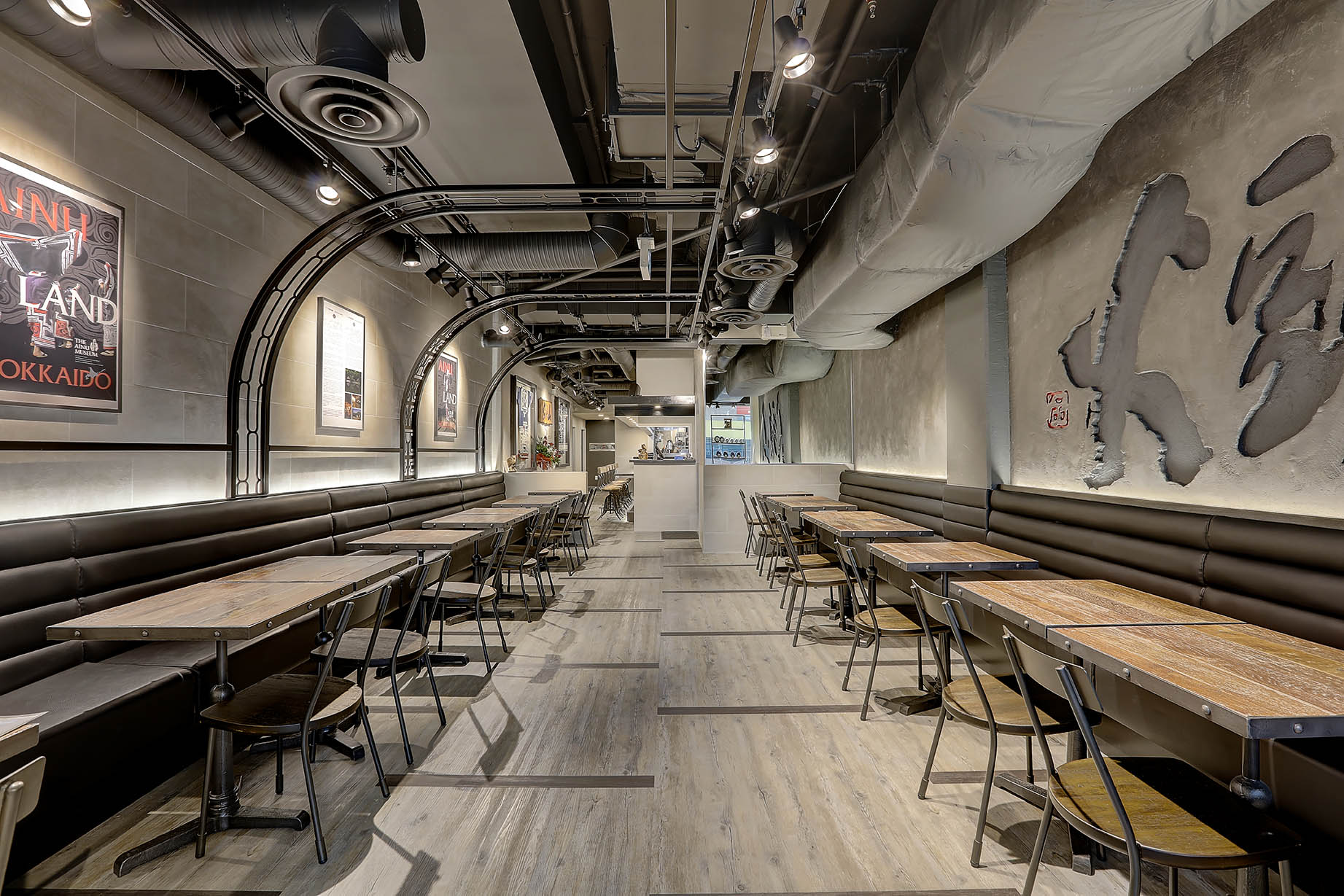
However, their initial foray overseas ended in failure, Kikuta says. Though they concluded a franchise contract with a Hong Kong company, a consensus could not be reached on maintaining Santouka’s original flavoring. Learning from that experience, they established a policy of first opening directly managed stores at overseas locations, then dispatching trustworthy staff to get them going, and providing subsequent guidance to local partners. This stubborn determination to maintain the original Japanese flavor at every store has no doubt helped solidify public trust in the Ramen Santouka brand.
The bottom line at Santouka is that their product—above all, the soup—is made from scratch in the kitchen of every store. This policy is strictly observed wherever possible in each country permit. But doesn’t making the soup on site pose problems for quality control, as well as reduce the efficiency that opening multiple stores is expected to provide? “It’s our job to ensure that it isn’t a problem,” Kikuta replies. Currently around 20 staff who trained in Japan provide guidance to overseas stores in reproducing the original Santouka flavor.
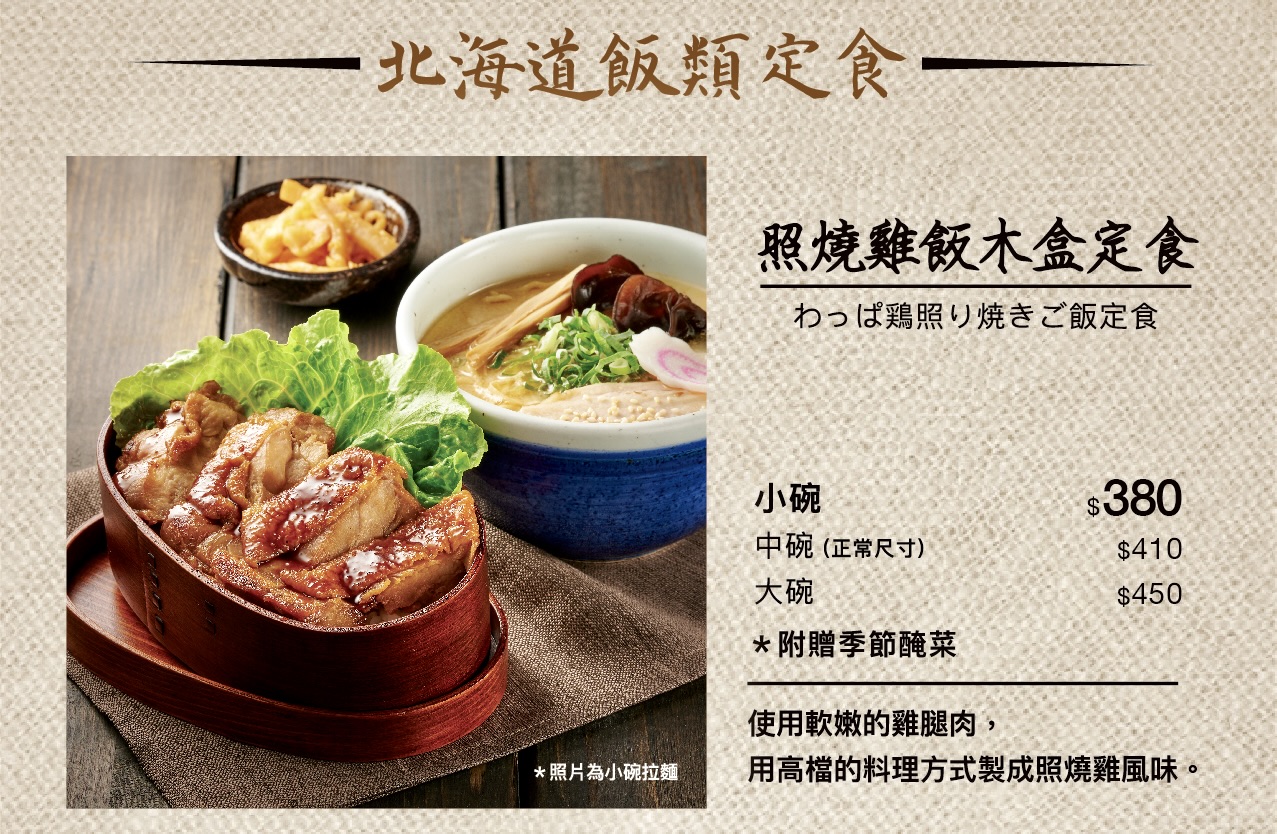
“I often eat at the San Jose branch, so I wanted to check out the main store,” said an overseas visitor who had just finished a meal at the Asahikawa flagship store. She added that she had been to several Ramen Santouka stores in the US, and that the soup there tasted the same as in Asahikawa—“but the noodles here were especially tasty.”
The driving force behind Ramen Santouka’s determination to expand overseas—never an easy proposition—is pride in the flavor of their product. “Once people try it, they are sure to want to come to Hokkaido,” declares President Kikuta. “Whether they are from Japan or abroad, we want people to gain some pleasure and peace of mind from eating our ramen. That’s our greatest goal.”
It makes perfect sense that the ramen’s homegrown flavor, and the care for the customer it embodies, would win the adoration of people worldwide. Why not pay a visit to Hokkaido and compare the flavor at your local branch of Ramen Santouka with the original? One treat you can only find in Hokkaido, at the Asahikawa flagship and Sapporo Kita-Ichijo Chikaho stores, is founder Hitoshi Hatanaka’s special recipe for shoyu (soy sauce flavored) ramen. The Chikaho store is conveniently located close to the Sapporo Clock Tower, a major tourist attraction. Your stomach and your soul will gratefully reward you for adding a bowl of ramen to your Hokkaido itinerary!
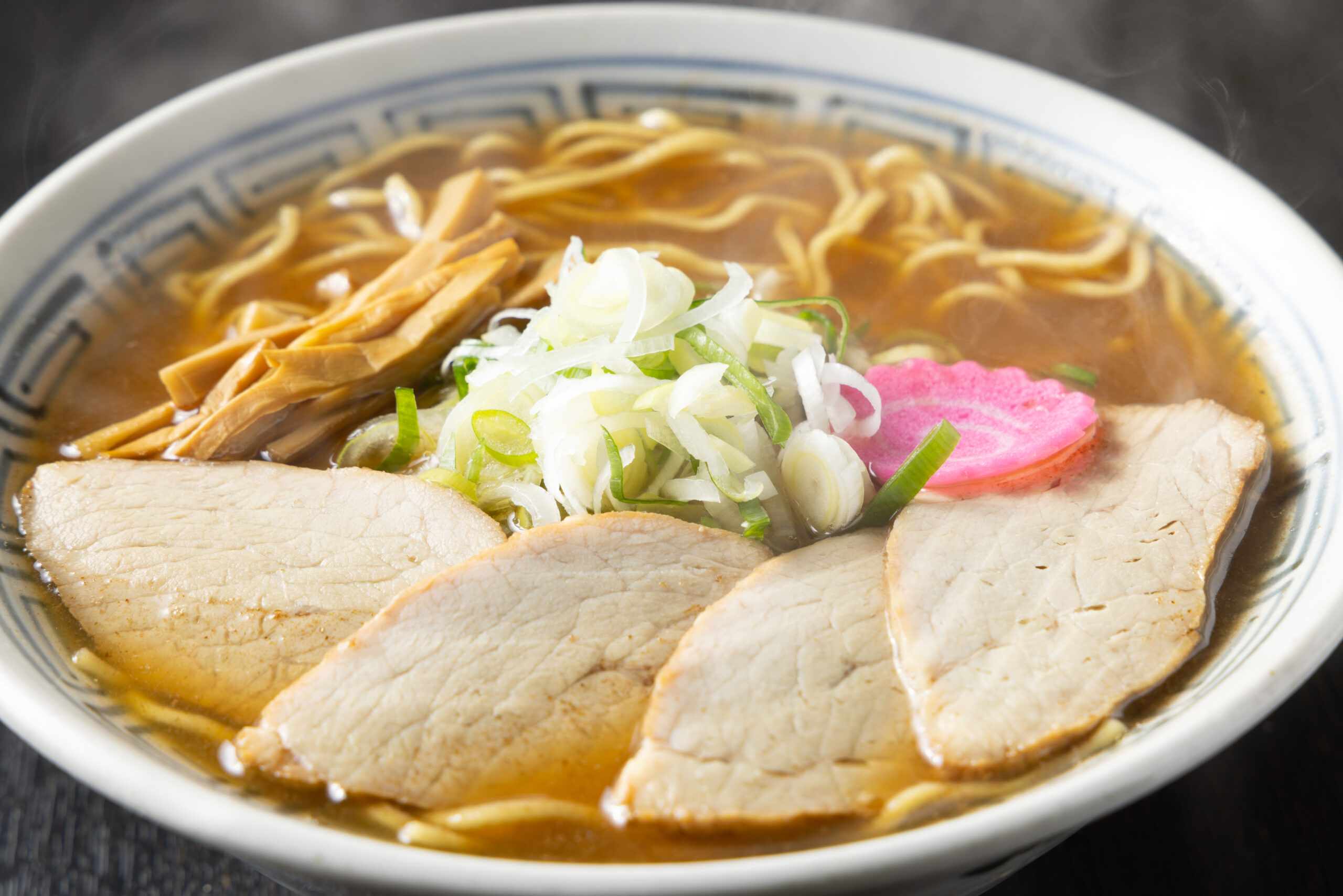
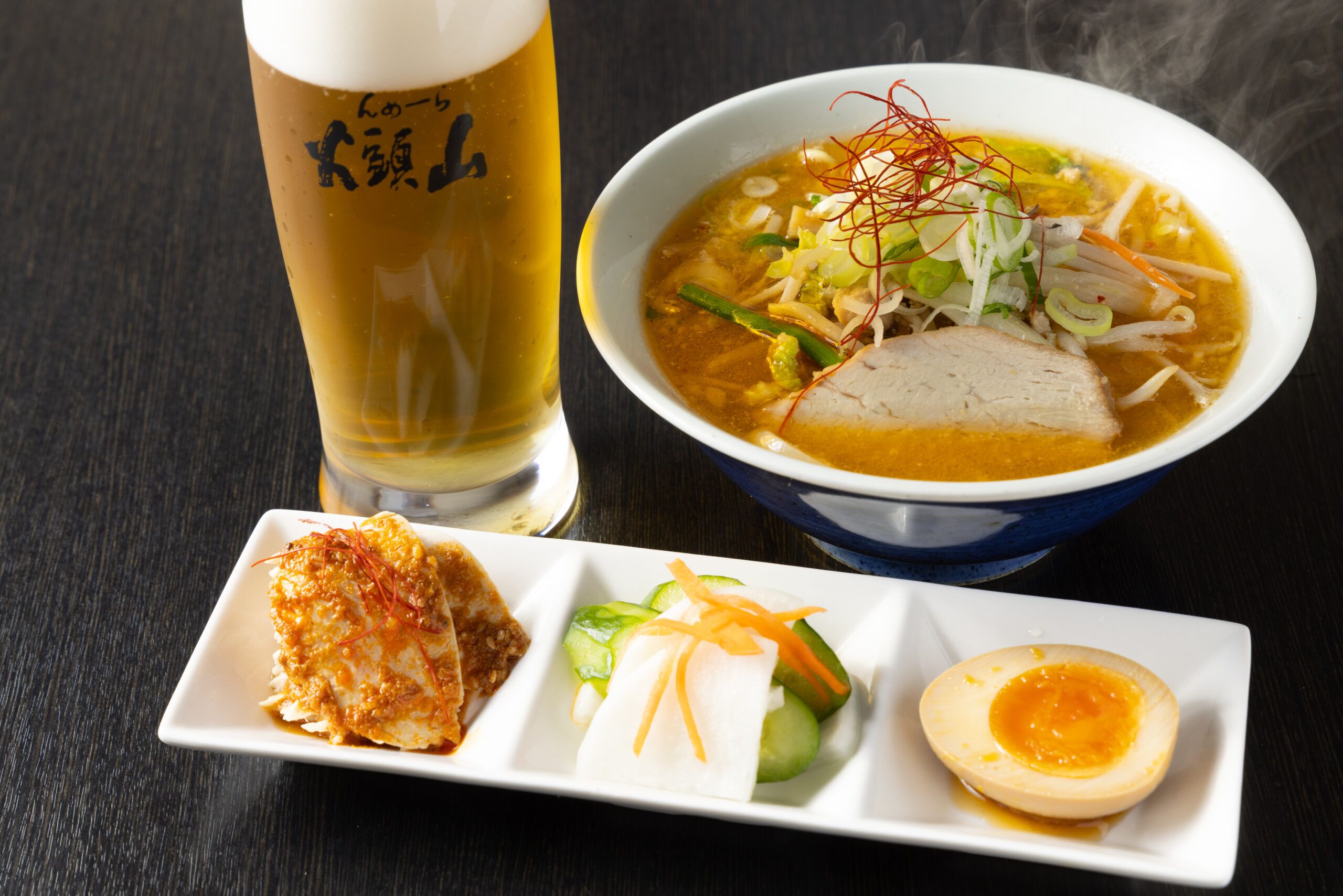
<Shop Information>
Ramen Santouka Sapporo Kita-Ichijo Chikaho Store
Sapporo North Plaza B1F, 2-2 Kita Ichijo, Nishi 4-chome, Chuo-ku, Sapporo-shi, Hokkaido
